Exploring the Captivating World of Marine Lighting
Marine lighting appears as a key component in this enigmatic area, not just for visibility but also for scientific investigation, environmental protection, and even artistic exploration. This article goes into the fascinating realm of marine lighting, throwing light on its significance, common types, technological breakthroughs, and many uses in understanding and protecting our planet’s aquatic ecosystems.
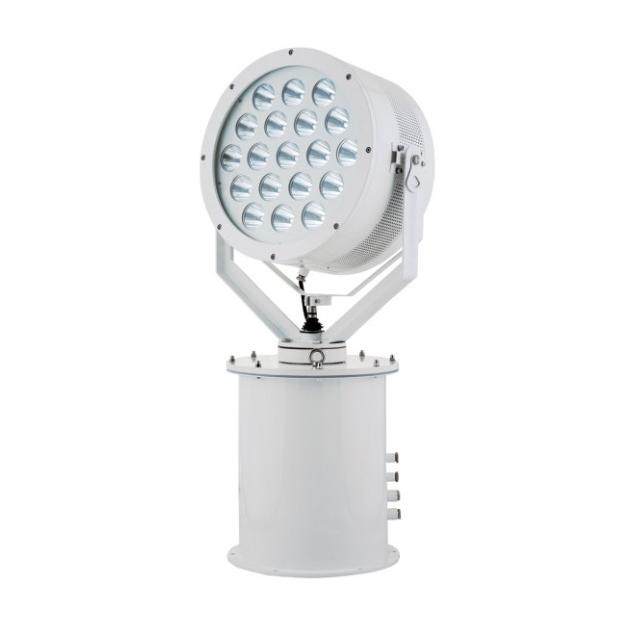
The Importance of Marine Lighting
Marine lighting plays an important role in our understanding and engagement with the aquatic world, from guiding ships to safety to enabling significant scientific findings.
1. Navigational Safety and Guidance
Marine lighting is instrumental in ensuring the safety of vessels navigating the tumultuous waters of oceans and seas. Lighthouses serve as recognizable landmarks, guiding sailors away from risky beaches, sharp rocks, and dangerous shallows. Navigation lights on ships and buoy lights strategically positioned along maritime routes give vital indications to seafarers, allowing them to chart a safe course.
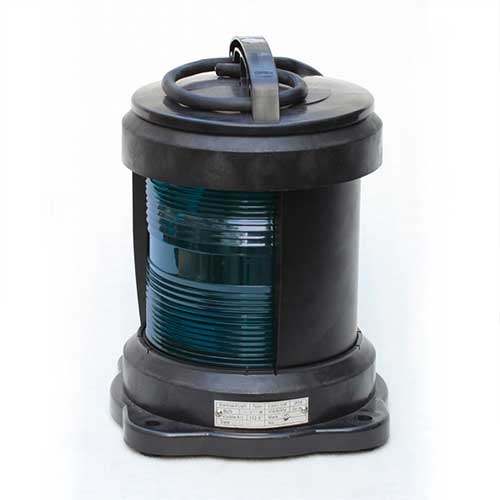
2. Scientific Exploration and Discovery
Under the surface, marine lighting reveals a world of undiscovered beauty and mystery just waiting to be discovered. Advanced lighting systems on submersibles, remotely operated vehicles (ROVs), and autonomous underwater vehicles (AUVs) illuminate the ocean’s depths. Researchers, oceanographers, and explorers can use these devices to record high-definition photographs and films of marine life, geological formations, and underwater ecosystems. Marine lighting converts these vessels into windows into the unknown, allowing humans to gain insight into a realm that has long eluded them.
3. Environmental Conservation and Study
Marine lighting is an important tool for researching and maintaining the complex marine ecosystems that are under threat from human impact. Unique to the depths, bioluminescent organisms emit their own light, and adequate lighting conditions are required to view and document their behavior. Marine researchers use controlled lighting to monitor and study marine life, enabling a deeper understanding of biodiversity, migration patterns, and the interactions that sustain delicate ecosystems. Additionally, responsible marine lighting practices mitigate light pollution, preserving the natural behaviors of marine species and supporting conservation efforts.
4. Artistic Exploration and Communication
Marine lighting acts as a conduit for artistic expression in addition to its utility purposes. Underwater photographers and filmmakers use specialized lighting equipment to capture the ethereal beauty of marine landscapes, creating visually compelling narratives that bridge the gap between the aquatic world and land-bound audiences. These artistic initiatives not only awe, but also build a closer relationship between humans and the waters.
5. Technological Advancements and Future Prospects
LED technology, energy efficiency, and remote sensing advancements have taken marine lighting into a new era. Technological advancements are changing the way people interact with marine environments, from minimizing light pollution to harnessing renewable energy sources for illumination. As technology advances, the future of naval lighting holds the potential of more sustainable, adaptive, and environmentally friendly solutions.
Common Types of Marine Lighting
Marine lighting is divided into several categories, each of which caters to distinct marine functions and applications.
1. Navigation Lights
Navigation lights are critical to marine safety because they ensure vessel visibility and prevent collisions in low-light or hazardous situations. These lights are often fixed aboard vessels and come in a variety of colors, each signaling the type and direction of travel of the vessel. Red and green sidelights, white stern lights, and a white masthead light are all common navigation lights. Because of the mix and arrangement of these lights, other vessels can detect the type, size, and heading of an approaching ship, allowing for safe passage.
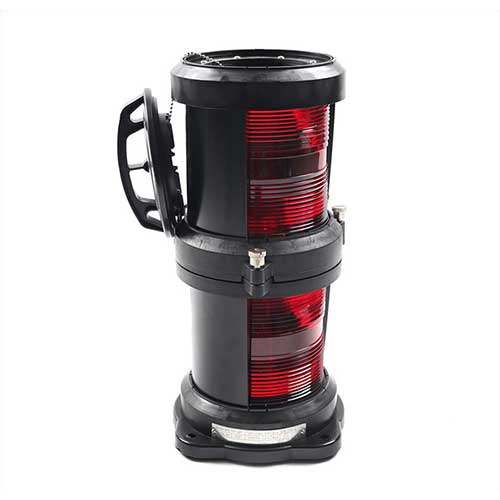
2. Lighthouses
For generations, lighthouses have served as iconic beacons of safety, guiding mariners away from difficult shores and dangerous waters. These structures are equipped with powerful lighting systems that emit distinctive patterns, ensuring their recognition from a distance. Lighthouses often have unique characteristics, such as specific intervals of light and darkness, enabling sailors to identify their location and orientation. Beyond their practical function, lighthouses symbolize maritime history and offer captivating views of the ocean’s vastness.
3. Buoy Lights
Buoy lights are important signs that indicate safe navigation through waterways, channels, and dangerous locations. The color and design of these lit signs change, with each combination representing a different navigational message. When approaching a harbor, for example, red buoys identify the port (left) side of the channel, whereas green buoys signal the starboard (right). These lights direct mariners over treacherous waterways, ensuring safe passage and avoiding mishaps.
4. Underwater Lights
Underwater lighting serves a variety of functions, including illuminating underwater structures and improving visibility in marine areas. Underwater lights are frequently used by dive boats, research vessels, and private yachts to attract marine creatures for observation and photography. Additionally, underwater lights highlight coral reefs and other submerged features, allowing scientists and enthusiasts to study these delicate ecosystems while minimizing their impact.
5. Research Lighting Systems
To investigate the ocean’s depths and chronicle its creatures, marine research vessels use specialized illumination systems. Remotely operated vehicles (ROVs) and autonomous underwater vehicles (AUVs) are outfitted with high-definition visuals for scientific study and recording. These lights are built to resist the pressures of deep-sea conditions, allowing scientists to take photographs and films that reveal the ocean’s mysteries.
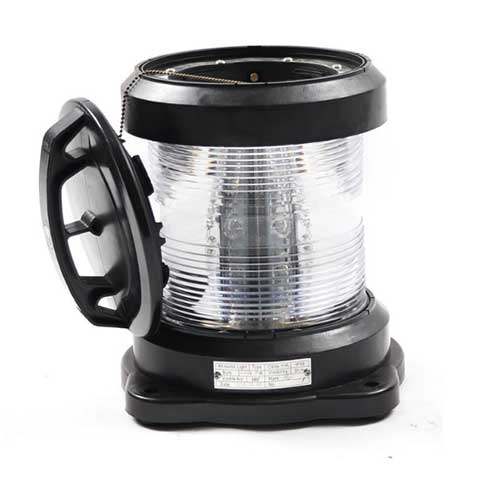
6. Fishing and Commercial Lighting
Marine light is essential in the fishing and commercial industries. Fishing boats use a variety of lighting systems to bring fish to the surface, increasing catch rates. Furthermore, commercial ships employ lights to load and unload goods at night, ensuring efficient port operations and maritime trade.
7. Deck and Interior Lighting
Deck and interior lighting, while sometimes underestimated, are critical components of marine safety and functionality. Decks that are properly illuminated minimize accidents and make onboard tasks easier during nighttime operations. During extended journeys, interior lighting provides a comfortable living and working environment for crew members.
8. Environmental and Wildlife Preservation Lighting
New systems that use adaptive lighting and sensors are emerging to reduce the impact of light pollution on marine life. These technologies minimize the interruption of natural behaviors like nesting and migration while still providing navigation and safety.
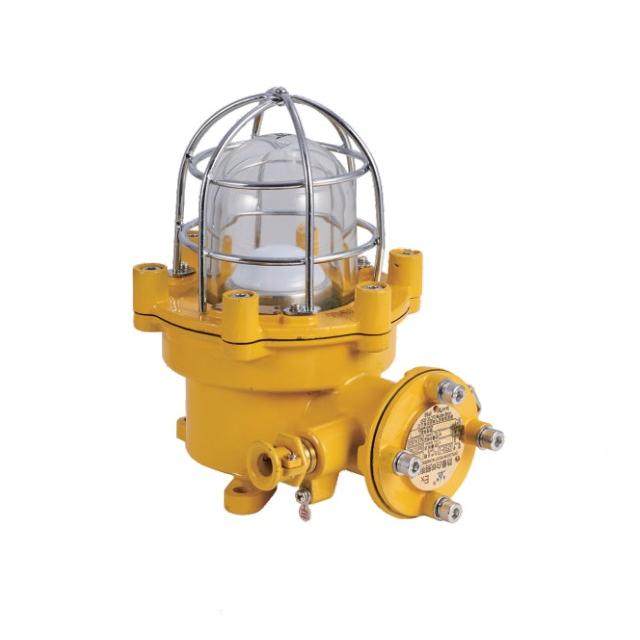
Innovative Technology of Marine Lighting
Marine lighting innovative technology are transforming the way we illuminate the oceans, from improving navigational safety to assisting scientific study and environmental protection.
1. Energy-Efficient LED Lighting
The use of light-emitting diodes (LEDs) is one of the most significant advances in naval lighting technology. LEDs have exceptional energy efficiency, utilizing substantially less electricity than typical lighting sources yet providing intense, focused illumination. LED marine lighting solutions minimize energy usage, lower vessel operational expenses, and increase the lifespan of lighting equipment, all of which contribute to more sustainable maritime practices.
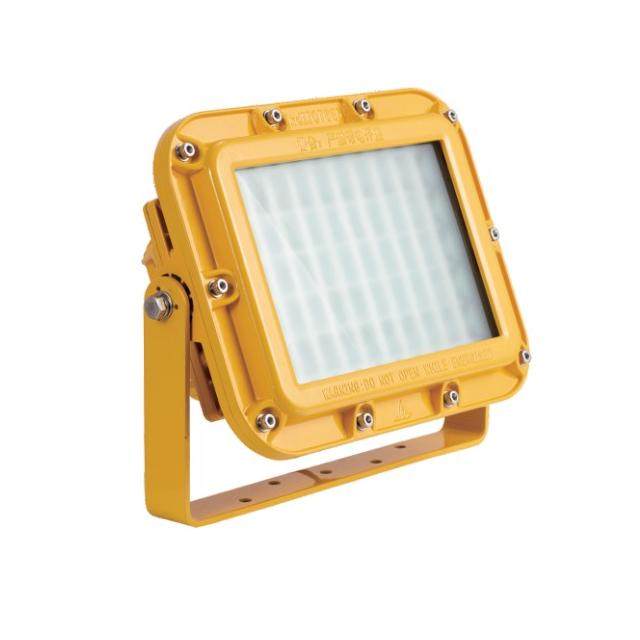
2. Adaptive Lighting Controls
Adaptive lighting systems are meant to change their intensity and color dependent on the surroundings and the needs of the user. In response to ambient light levels, weather conditions, and the presence of marine life, these intelligent devices can decrease or enhance light output. Adaptive lighting reduces light pollution while keeping marine species’ natural habits while still providing navigation and safety objectives.
3. Remote Sensing and Monitoring
Remote sensing technology advancements are enabling naval lighting systems to become more sophisticated and responsive. These devices capture data on ambient light levels, weather patterns, and marine life activities using sensors. This data is then used to real-time change lighting conditions, ensuring optimal visibility for navigation while minimizing impacts to marine habitats.
4. Renewable Energy Integration
Marine lighting systems are progressively embracing renewable energy sources in the goal of sustainable nautical operations. Solar panels and wind turbines are integrated into lighting systems, harnessing nature’s power to illuminate navigational aids and research equipment. This minimizes dependency on fossil fuels and traditional power sources, lowering the carbon footprint of naval lighting operations.
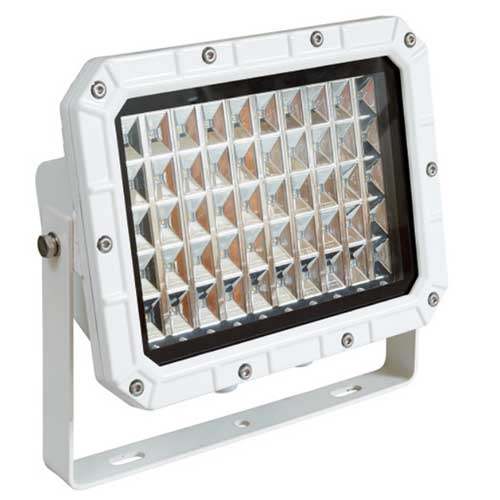
5. Smart Lighting Networks
Emerging smart lighting networks allow individual lighting units to communicate and synchronize their actions. This innovation improves navigational light coordination, resulting in a more harmonious and effective lighting system across wide maritime areas. Smart lighting networks also allow for remote monitoring, maintenance, and troubleshooting of lighting installations, hence improving performance and dependability.
6. Reducing Impact on Marine Ecosystems
Innovations in marine lighting technology are increasingly focusing on reducing the ecological impact on marine life. Warm-colored LEDs and shielded lighting designs lessen light pollution and interfere with marine species’ normal habits. Lighting solutions that fit with the biological rhythms of aquatic species are being developed to ensure their well-being while also serving practical purposes.
7. Integrating Artificial Intelligence (AI)
The integration of artificial intelligence (AI) is poised to to revolutionize marine lighting systems. AI algorithms can assess sensor data, forecast lighting requirements depending on marine circumstances, and modify lighting parameters in real time. This predictive capability improves navigational safety, decreases energy consumption, and has a lower impact on marine ecosystems.

Summary
Marine lighting is a diverse subject that ranges from vessel safety to solving deep sea mysteries. Its relevance extends beyond functional applications, extending into the fields of science, art, and conservation. Marine lights will continue to play an important role in illuminating the oceans while protecting the delicate balance of aquatic life as technology advances.


